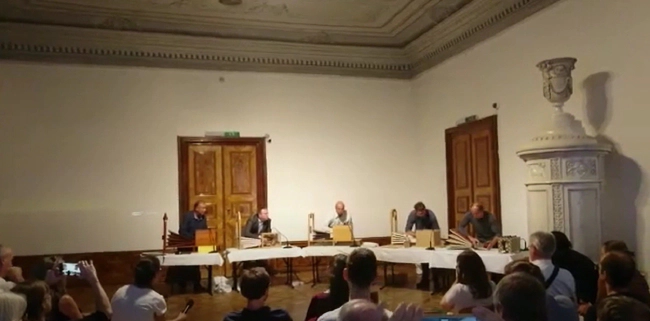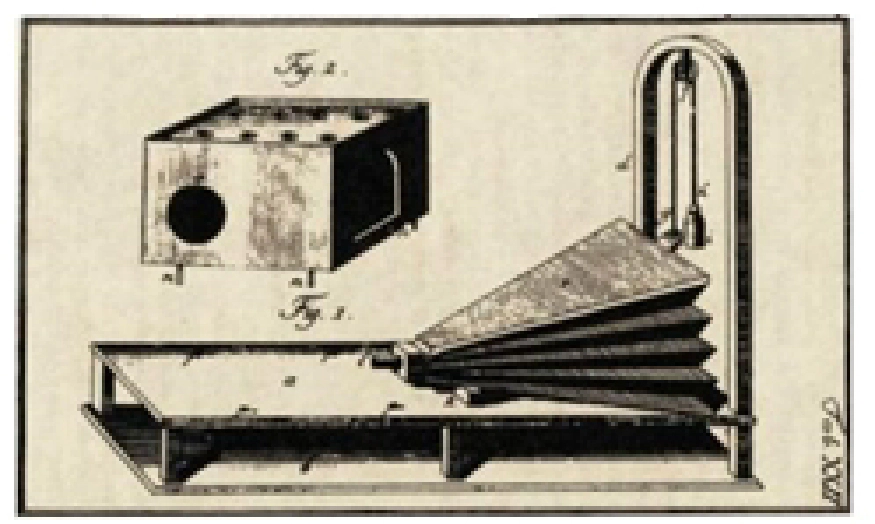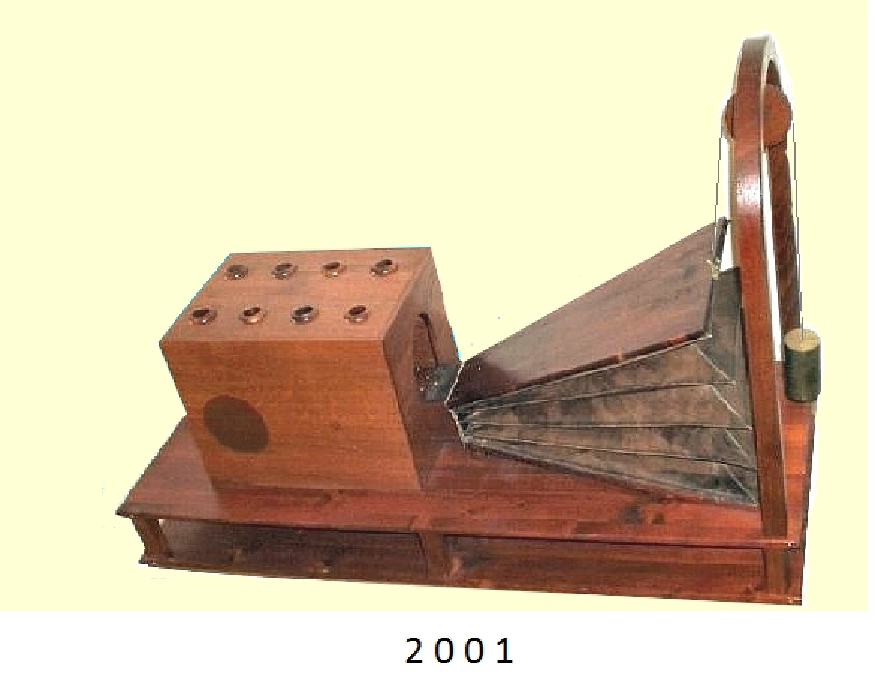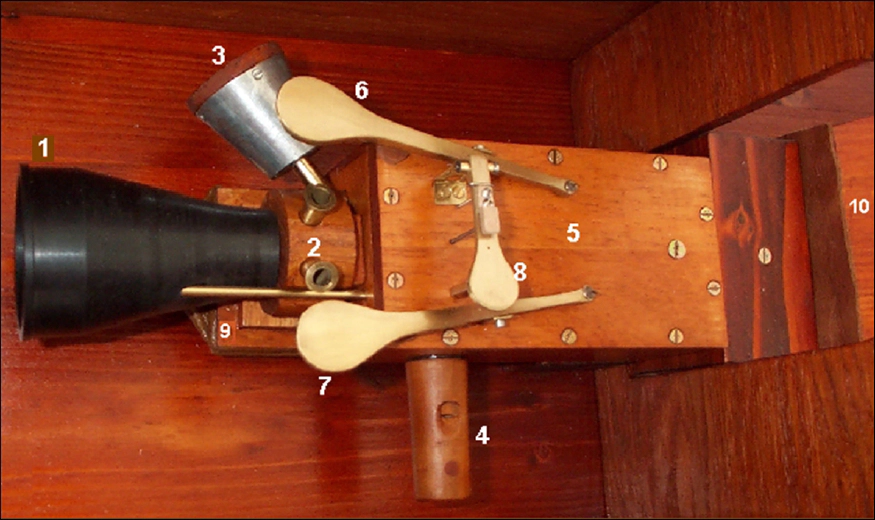Farkas Kempelen
Farkas Kempelen inventor, architect, polyhistor (1734-1804) built the first speaking machine, with today’s term a speech synthesizer. He preceded the age of computing and informatics by 200 years. Today, at the beginning of the 21st century, almost every digital device has a speech synthesiser, so machines can talk.
He introduced the speaking machine in 1791 in Vienna. This machine was rebuilt in 2001 by Péter Nikléczy and Gábor Olaszy.
Kempelen considered this machine to be the main scientific work of his life. He has conducted experiments for more than 20 years to prove his idea “human speech can be produced by machine”. In his first experiments, he tried a solution similar to the organ of a church, but later discarded it and began to study the organs of human speech generation and the properties of speech sounds. He invented the voice transition phase, which is essential for continuous speech. This finding is an important theorem in the science of phonetics also in the 21st century.
The parts of Kempelen’s speaking machine are as follows:
-
The ‘mouth’ made of elastic material so that it can be shaped with the fingers of the left hand. This part imitated the functioning of lips and the jaw.
-
Nasal tubes that mimic the nostrils when producing nasal sounds.
-
The resonator of the F sound (special solution with paper cards).
-
The resonator of the sound S (a tube similar to a flute).
-
Sound box (inside the machine, the bellows is connected to it. This palm-sized, hermetically sealed unit has a vibrating reed inside that mimics the operation of the vocal cords in the larynx, when air flows from the bellows). Three control keys at the top of the sound box serve for making
-
F
-
S, and
-
R sounds.
-
Lower small bellows that ensures additional pressure for producing voiceless stop consonants.
-
Bellows, that imitates the functioning of lungs.
With this machine it was not possible to produce continuous speech, only words and short expressions. The machine is controlled with both hands and the right elbow, with a rather complicated and fine movement series. The elbow presses the bellows while the fingers of the right hand handle the S, F, and R keys and the nostrils. In the meantime the fingers of the left hand change the shape of the mouthpiece or the left palm closes/narrows the opening of the mouthpiece to produce certain vowels. This machine was the world’s first biomechanically controlled language-independent articulatory speech synthesizer in 1791.
Presentations between 2001-2022
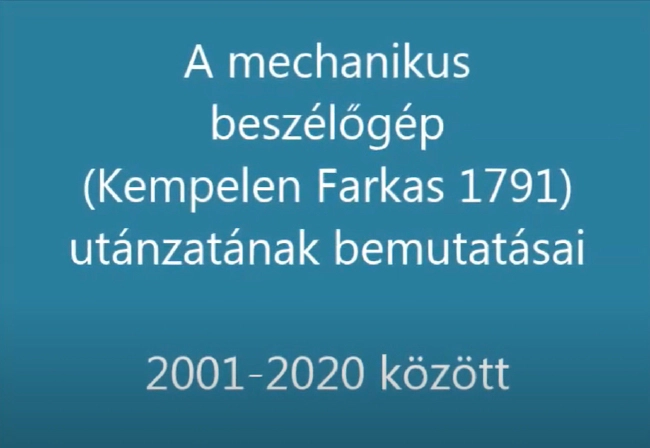
The voice of the mechanical speaking machine
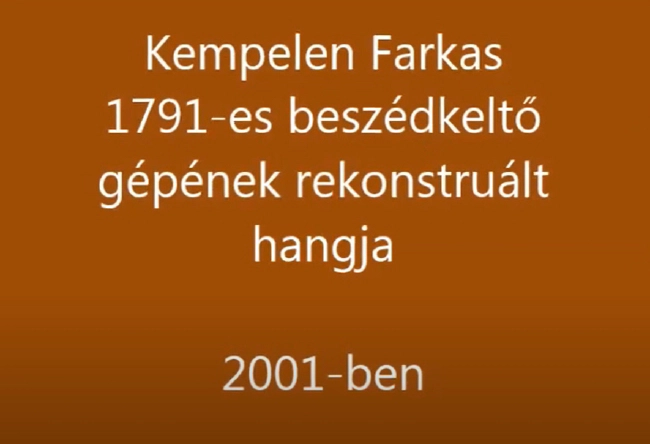
Reconstruction
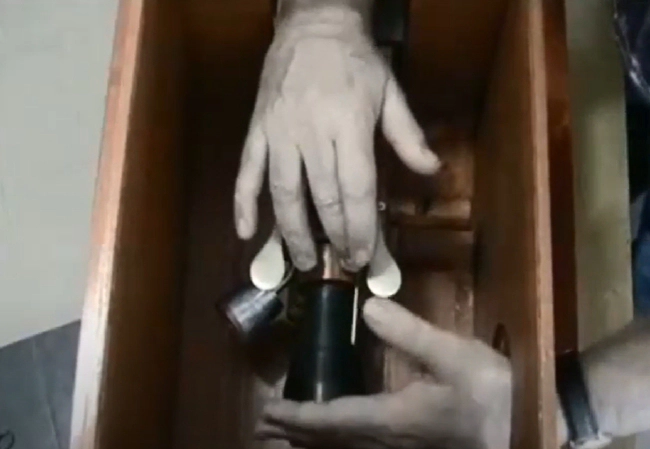
“Choir” of Kempelen’s reconstructed machines
